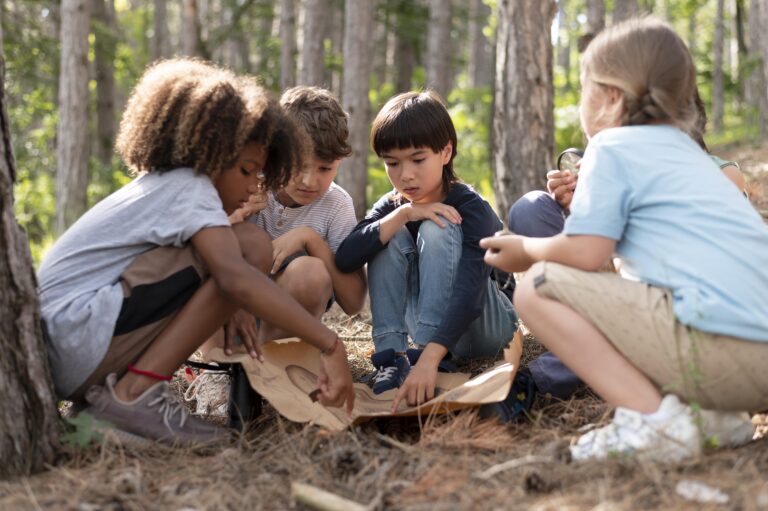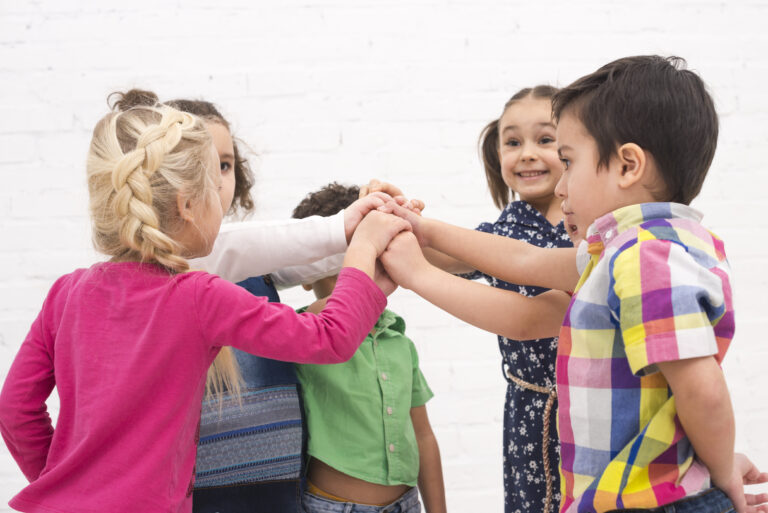Using Social Stories and Empathy Activities to Promote Inclusion in Autism-Focused Schools
Inclusion is more than a buzzword in autism-focused schools—it’s a deeply rooted philosophy that shapes how students learn, connect, and thrive together. While academic achievement is certainly important, creating a space where children feel understood, welcomed, and capable goes far beyond textbooks. With the right tools and strategies, schools can support both autistic and neurotypical students in developing critical social-emotional skills. Two powerful tools in this work are social stories and empathy activities—methods that help students understand themselves, recognize others’ perspectives, and engage in meaningful relationships.
These strategies do more than teach manners or manage behavior. They create common ground between learners with different neurological profiles by providing structure, promoting self-awareness, nurturing kindness, and paving paths to genuine friendships. This post explores how social stories and empathy-building exercises can be integrated into autism-centered educational environments in ways that elevate inclusion, foster communication, and spark cooperative learning.
What Are Social Stories and Why Are They So Effective?
Developed by Carol Gray in the early 1990s, social stories are short, personalized narratives designed to prepare individuals—particularly those with autism—for specific social situations. Written from the student’s point of view, these stories introduce the steps of a particular experience, explain the expected behavior, and describe the feelings or reactions of others involved.
At their core, social stories are about making the hidden curriculum—those unspoken social rules—accessible. In classrooms, lunchrooms, assemblies, or playgrounds, there may be dozens of unwritten expectations. For many students with autism, who may struggle with social cues or transitions, this ambiguity can increase anxiety. A well-crafted social story minimizes this confusion by presenting information in a structured, concrete way.
These stories are particularly powerful because they don’t try to change who a student is. Instead, they affirm, prepare, and empower each child to approach situations with confidence. Whether it’s starting a conversation, asking for help, or working on a group project, social stories offer a meaningful tool for success.
The Role of Empathy in Neurodiverse Classrooms
Inclusion doesn’t end with understanding rules—it thrives on relationships. That’s where empathy activities come into play. While neurotypical students may grasp emotions through observation and experience, autistic students may benefit from explicit instruction. On the flip side, neurotypical students often benefit from learning how to relate to autistic peers in nonjudgmental and compassionate ways.
Empathy-building in the classroom creates a foundation for mutual respect. It’s not about turning children into therapists for one another—it’s about supporting them in becoming better communicators, listeners, and collaborators, regardless of their individual abilities or communication styles.
Incorporating empathy activities into daily routines helps all students recognize emotions (in themselves and others), remain calm under pressure, and choose kind actions over reactive ones. These learned behaviors quickly translate into stronger peer relationships and a more peaceful, connected classroom environment. And when embedded into lessons, games, or stories, the process becomes engaging and joyful, rather than forced or clinical.
Stories That Shape Behavior and Community
When social stories are used consistently, they do more than teach behavioral expectations. They quietly shape the culture of the classroom. For example, a story that walks students through the emotions of being interrupted during a game can help build self-awareness and patience. Another might highlight what it feels like to be left out of a group activity, opening the door to conversations about inclusion and kindness.
Some stories are meant for individual students—those facing specific challenges around transitions, sensory needs, or emotional regulation. Others are written for the entire class to promote perspective-taking as a group. A story about how classmates use different ways to communicate—some with speech, others with picture boards or speech devices—can promote normalization of AAC and validate different forms of expression.
Rather than singling out any student, these stories model inclusive thinking. They highlight that every student has feelings, preferences, and challenges—and that compassion can spark friendship and trust.
Moving Beyond Stories: Empathy in Action
Teaching empathy doesn’t stop at recognition. It relies on active practice. For younger students, recognizing emotions may begin with looking at flashcards of happy or sad faces or mimicking emotions in front of a mirror. In older students, it often shows up through group discussions about stories they’ve read or collaborative games that encourage listening to others’ ideas.
One highly effective technique is role-playing daily scenarios. For example, if a student drops a lunch tray in the cafeteria, how should we respond? Students take turns acting out different roles—the person who dropped the tray, their friend nearby, the teacher walking by. As students reflect, they begin to understand the emotional layers behind actions and learn to respond with kindness rather than judgment.
Another engaging method is using class-wide storytelling. Inviting students to build stories together—perhaps about a misunderstood character or a lost pet looking for a home—helps deepen narrative thinking and opens up space to discuss empathy on a symbolic level. These group stories allow even non-speaking students to participate through drawing, pointing to story cards, or using AAC.
Rather than formally teaching empathy as a standalone “unit,” educators in inclusive settings weave it into everything: discussions, transitions, problem-solving time, and play. Eventually, students stop seeing empathy as something extra and start engaging with it as part of their daily interactions.
Encouraging Peer Bonding Through Shared Experiences
Children are natural storytellers. They make sense of their world through imagination, curiosity, and conversation. Structured group storytelling brings this all together—language development, turn-taking, creativity, and social connection—while honoring everyone’s voice.
A well-facilitated group story might begin with a prompt, such as: “One day a new animal came to our classroom…” Each student adds a line, drawing, or action to move the story forward. This process equalizes participation: everyone contributes in a way that taps into their own strengths.
Over time, these shared experiences lead to more than just improved communication—they plant seeds of authentic friendship. Students begin anticipating each other’s contributions, celebrating new ideas, and navigating the relational dance that storytelling requires. For autistic students who may struggle with social initiation, being part of a group activity with structure and creativity offers a risk-free opportunity to explore connection.
Group storytelling and similar activities, like collaborative art or music projects, provide a nonverbal, sensory-rich outlet for building bridges between children who might not otherwise interact naturally. Many educators witness these moments become turning points: the day a quiet student added their first sentence to a group story; the moment two classmates laughed at the same silly plot twist; the smile exchanged after building a storybook character together.
Shifting Paradigms: From Awareness to Acceptance to Belonging
For decades, efforts to support autistic students in schools have focused on creating “awareness.” But there’s a vital difference between awareness and authentic inclusion. Awareness says, “I know you’re different.” Acceptance says, “You’re different, and that’s okay.” But belonging goes even further—it says, “I’m glad you’re here, and this place wouldn’t be the same without you.”
Social stories and empathy activities help move classrooms closer to that goal of full belonging. They don’t just highlight differences; they celebrate them. They give students the language to ask questions, express curiosity, and offer support. They teach that there’s no “normal” way to feel, communicate, or learn—and that each person brings something valuable to the group.
Classrooms that prioritize these ideas see real transformation. The culture becomes one where eye contact isn’t required to show respect, speech isn’t the only path to conversation, and unique behaviors aren’t seen as disruptions, but adaptations. And that, ultimately, is what inclusion requires: a perspective shift that moves from compliance to connection.
A Look Inside An Inclusive Day
Imagine a typical day in an autism-focused inclusive school. The morning begins with a group meeting where a social story helps prepare students for a new routine: perhaps a fire drill or a substitute teacher. The teacher revisits the feelings that might come up and reminds students of tools they can use—a breathing exercise, noise-canceling headphones, holding a squeeze toy.
Later in small groups, students collaborate on a group story about a lost balloon that travels around town. Each student adds to the adventure—one draws, another acts out a scene, a third types their contribution on an AAC device. Laughter fills the room as the balloon gets stuck in a giraffe’s horns.
During recess, a small misunderstanding arises. Back inside, they revisit the earlier story about what to do “When I Feel Frustrated.” Students recall different strategies and walk through a simple breathing routine together.
By the end of the day, students are not just practicing reading or math—they’re learning how to coexist with empathy, appreciate different ways of being, and feel proud of what they bring to their community.
Final Thoughts: Inclusion Begins With Intentionality
Inclusion doesn’t just happen because of good intentions. It requires structure, language, modeling, and commitment from the entire school community. Social stories and empathy activities aren’t magic solutions—but they are powerful tools that cultivate understanding, reduce fears, and build bridges.
Every time a student reads a social story about taking turns, they’re learning more than a social rule—they’re learning that their voice matters. Every time a class plays a game that asks how someone else might feel, they’re building a deeper toolbox for human connection.
Whether you’re a teacher preparing a new classroom activity, a caregiver hoping to support peer friendships, or a therapist working on communication goals, remember this: the heart of inclusion is seeing each student not just for who they are, but who they can become in a classroom that welcomes them completely. Fostering social skills for kids with special needs is a vital part of this journey—helping every child build meaningful connections and thrive within their community.
Because when we design learning spaces where differences are embraced, stories are shared, and emotions are honored, every child belongs—and every child shines.



